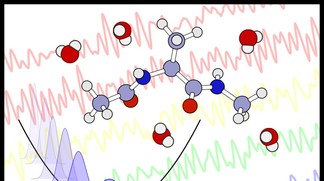Mar 4 2014
February issue of the Psi-k network's newsletter contains a scientific highlight reviewing the use of colored-noise Langevin dynamics to improve first-principles molecular dynamics.
 © 2014 EPFL
© 2014 EPFL
Molecular dynamics can be used as a very eff ective, general-purpose approach to generate atomic con gurations for a material or chemical compound that are consistent with prescribed experimental conditions. It is an ideal companion to ab initio electronic structure methods, that allow one to evaluate the inter-atomic forces from first principles, avoiding the time-consuming and at times inaccurate process of designing an empirical model. Unfortunately, ab initio methods are still computationally demanding, and so it is desirable to modify the properties of the dynamics to get a more eff ective exploration of phase space than allowed by the intrinsic system's dynamics. A very eff ective approach to manipulate the sampling behaviour of a molecular dynamics simulation exploits non-Markovian, Generalized Langevin Equations (GLEs) that have been used in the past to model the coupling of the system with a physical bath. Within this framework, the impact of the correlated noise on static and dynamic properties of the trajectory can be predicted analytically in the harmonic limit. One can therefore optimize the performances of the GLE a priori, and obtain eff ects that range from eff ective sampling of all the relevant time scales, to fine-tuned control of the disturbance of dynamics for di erent frequency ranges, to the design of non-equilibrium trajectories that can be used to model zero-point energy and other nuclear quantum e ffects and even to evaluate matrix functions with linear scaling eff ort. Correlated noise can also be combined with imaginary time path integral molecular dynamics, to obtain fast and systematic convergence of properties that depend on the quantum nature of light nuclei -- that are paramount for materials that contain hydrogen.